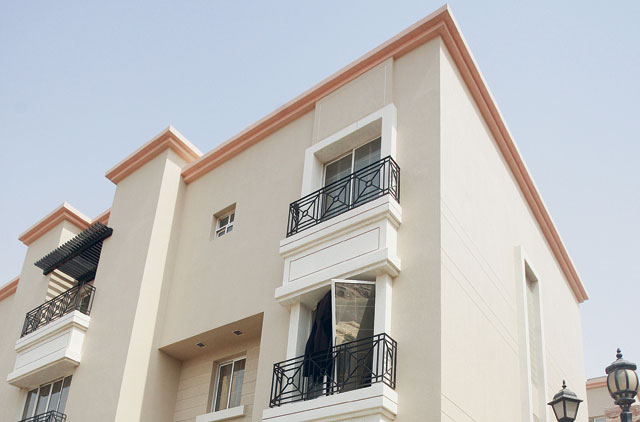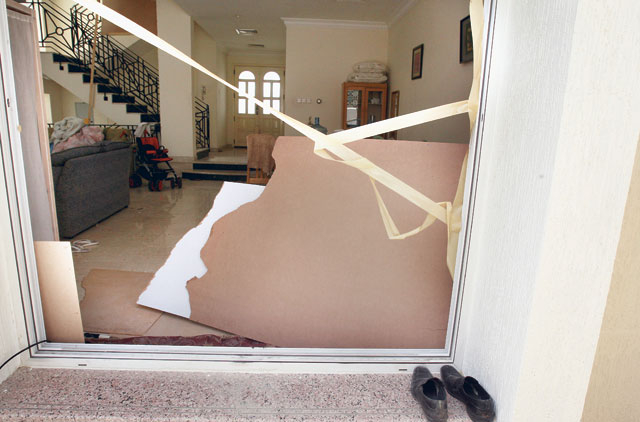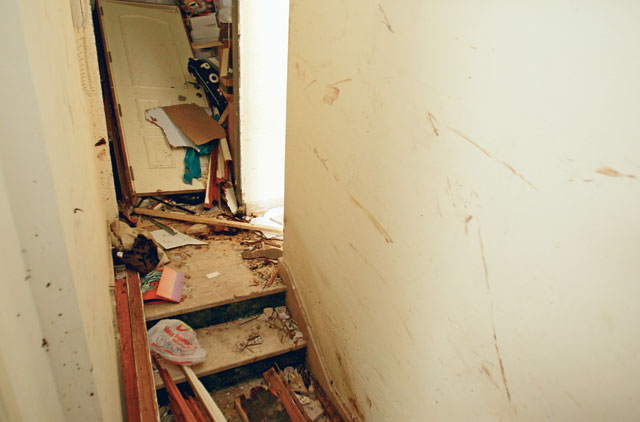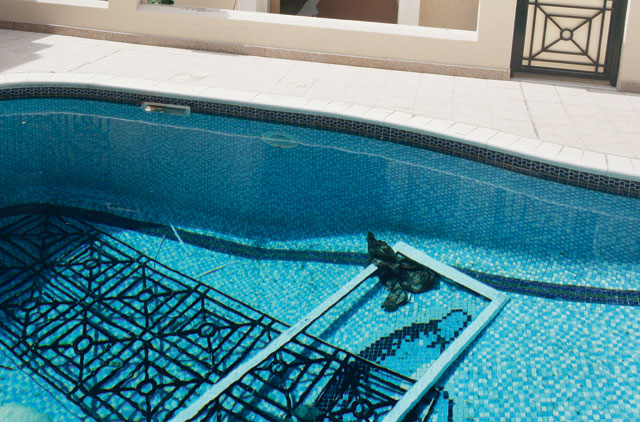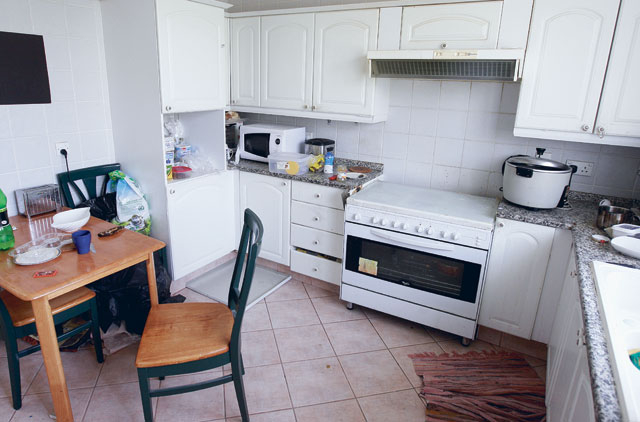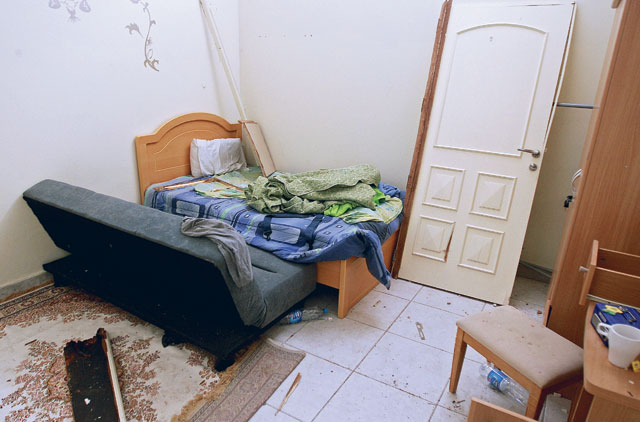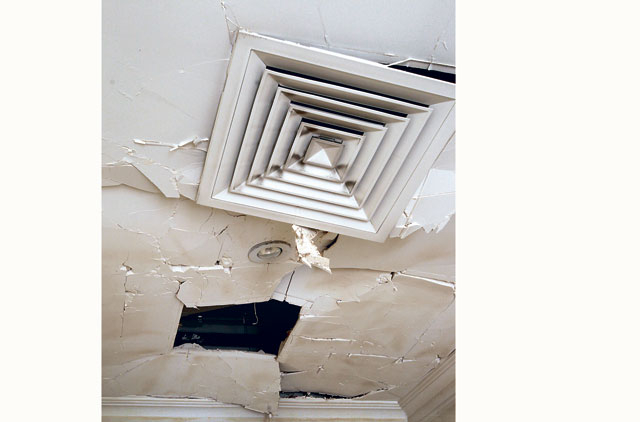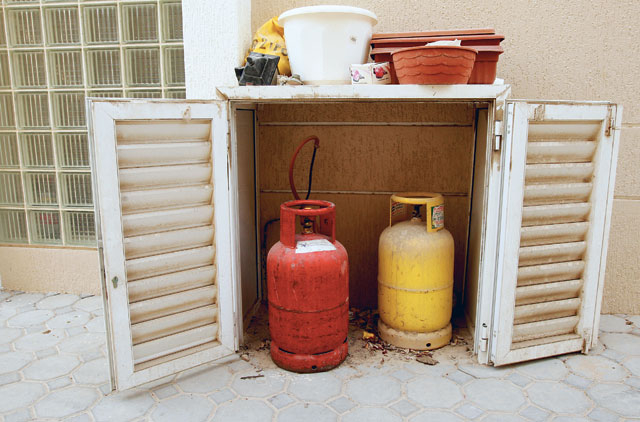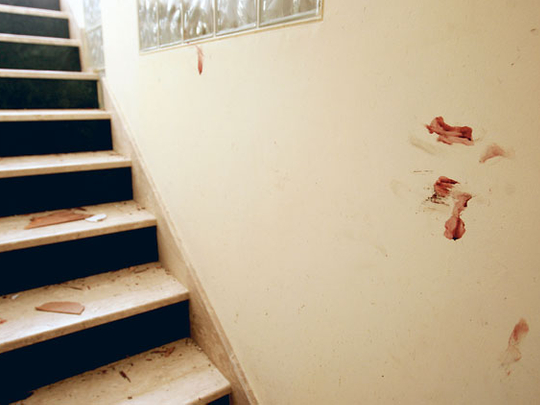
Dubai : Entering through the back of villa No 42A, the scene of the unexplained explosion in Mirdif on the night of June 18, we're greeted by blown-off doors, windows and wall partitions sunk to the bottom of the community swimming pool. A gaping hole can be seen in what used to be a back door.
To the left of the living room lies the kitchen, the place where the girls "allegedly" struck a match to light the oven, which some reports suggest caused the explosion. But unlike the living room, the kitchen is undamaged. Not a scratch, burn stain or broken glass… the stove stands spotlessly clean, with pots and pans still intact in the oven.
A near-empty jar of marmalade holds its own inches away from the alleged site of the explosion.
A fire that was started by a gas leak in the kitchen? From what our eyes can see, that seems highly unlikely.
Off the kitchen lie the stairs leading to the basement, where Fatima Housee, the girl in whose villa the explosion occurred, and her three friends Daniella Seddon, Kim Oberholzer and a fourth, believed to be a girl named Leena, were present when the disaster struck.
The damage in the basement is shocking. Stepping over broken door frames, debris and blood stains, we enter Fatima's bedroom. The door leans against the wall. A cup of tea with a used tea bag stands miraculously intact. Elsewhere, it looks like the scene of a bomb blast. Covered in the dirt, face down, is a FIFA keychain, supporting Brazil.
It's hard to focus on any specific item when the bloody hand and footprints stare unrelentingly at us. We have no choice but to follow the bloody trail the girls left behind, out of the bedroom, up the stairs and to the front door.
Upstairs, while damage to the bedrooms is minimal, except windows and doors which have been blown away, it is the ceiling on the second floor which bears witness to the force of the explosion.
Theories aplenty
An unnamed resident has a theory of the possible cause of the explosion: Methane gas leaking from the underground septic tanks.
The neighbour, who wishes to remain anonymous, says, "we complained to the landlord that the basement bathrooms in the villas are non-functional. Instead of fixing the issue, concrete was placed in the pipes and drains. Two years ago, the septic tank started building pressure as it hadn't been emptied." Sewage water flooded the basement.
"If a water molecule can leak through the floor, why not a gas molecule?" she questions. So could it be the case that gas leaked from the septic tank, through the floor, and into the house?
Walking through the damaged house, one thing is clear: whatever happened here happened in the basement. The blood trail the girls left behind speaks louder than their induced silence.
Questions remain
If reports are true that the explosion was caused by a match to light the oven, how can there be no damage to the kitchen? How can the gas cylinders remain not only intact, but also relatively full? How could the girls have lit a match in the kitchen when bloody footprints clearly show they climbed up the basement stairs and out the front door, bypassing the kitchen altogether, leaving a blood trail as proof.
"Do you want to tell me that an oven can explode without having a scratch on it?" asks Zelda Van Rooyen, a neighbour.
Convinced that things were not adding up, we walked through the house once more. If the theory of the explosion went from early suggestions of misuse of lighter fuel in the basement, to leaking gas in the kitchen, none of which can be proved, then what really happened?
Which brings us back to the suggested theory of methane gas.
We look at the kitchen stove. Every plate, cup and glass is intact. We look in the basement, there's nothing that could have caused an explosion. "Where did that gas come from?" asks Van Rooyen. "Until someone explains, my family and I can't live here. Your neighbour's house does not just explode and you carry on with life as if nothing has happened."
Neighbours' account
Fatima's neighbour Jane lives in the villa next door. Reliving the horror of the night. Jane says, "It took ambulances ages to arrive." A psychologist herself, Jane talked the girls through their ordeal until the paramedics came.
Van Rooyen estimates the ambulance must have taken 45 minutes to arrive. "Given that they [paramedics] were informed of four girls with severe burns, they only sent one ambulance," she says. "They literally had the girls play musical chairs to see who would and would not fit in the ambulance. Another 10 or 15 minutes later, the second ambulance arrived."
Even more horrifying, says Jane, "is that the first ambulance only had one oxygen tank for the four girls!" Although she wasn't able to recognise all the girls, she recalls one of them asking if her face was okay.
Further conversations with residents reveal the presence of a fifth person in the villa: An Indian lady on the second floor. At the time of the explosion, she was reading in her room. Jane and Van Rooyen recall asking the unidentified woman to come downstairs for safety reasons.


